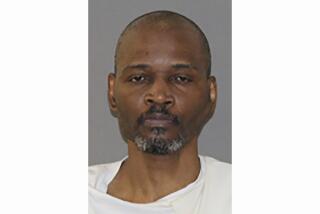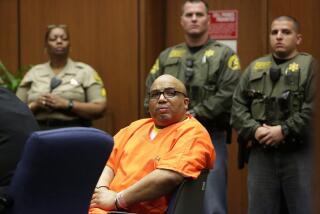Court Overturns Murder Conviction Because Jurors Gathered New Evidence
SANTA ANA — An appeals court reversed the conviction of a Stanton man who was found guilty of fatally beating and stabbing his wife in their mobile home, according to a ruling released Thursday.
The 4th District Court of Appeal, ruling 3 to 0, overturned the murder conviction of Jack M. Turner on the grounds that the jurors gathered evidence through improper experiments during their deliberations.
“Obviously I’m disappointed in the ruling,” said Deputy Dist. Atty. Bernadette Cemore, the prosecutor in the case. She said the case will automatically be remanded back to Superior Court to be retried. Turner’s attorney could not be reached for comment.
Turner is charged with killing his 53-year-old wife, Ann, on Aug. 23, 1988.
He told authorities that he had gone to the store that night on an errand and was hit on the head and knocked out by an unknown attacker as he entered the trailer.
He said that when he regained consciousness he found his wife lying dead on the dining room floor.
Ann Turner apparently had been struck with a wrench and stabbed with a knife--two objects recovered from the scene.
Police arrested Jack Turner shortly after the slaying because of inconsistencies in his statements and evidence found at the mobile home, authorities at the time said.
One of the key pieces of evidence that helped convict Jack Turner came during testimony from a pathologist called to the stand by the prosecutor. The pathologist said that the fatal injuries appeared to have been inflicted by a left-handed assailant. Turner’s son then testified that his father is left-handed.
The defense attorney countered with two forensic pathologists who testified that it was impossible to determine whether the wounds were caused by a right-handed or or left-handed attacker.
A criminalist, who was also called by the prosecution during the eight-week trial, later testified about the types of blood found at the scene and about several “fresh gouge marks” in a night stand near the victim, according to the justices’ written opinion.
Although the criminalist did not say what type of instrument caused the marks, or whether a left or right hand wielded the instrument, the jurors apparently seized upon this testimony to conduct their own experiments.
During 20 hours of deliberations, the jurors “attempted to determine the angle of the gouges in the night stand,” the opinion stated. “Their results indicated the gouges were consistent with those being made by the wrench while held in the left hand, but inconsistent with those being made while held in the right hand.”
The justices overruled the conviction because they found that “the jurors’ experiment produced new evidence” which “the defendant had no opportunity to refute.”
More to Read
Sign up for Essential California
The most important California stories and recommendations in your inbox every morning.
You may occasionally receive promotional content from the Los Angeles Times.










